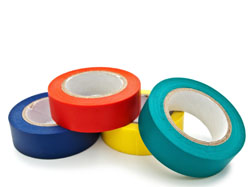Toward mass production of superconducting tapes
Superconductors are materials that exhibit nearly no resistance (infinite conductance) to the flow of electrical current when super-cooled to temperatures near absolute zero. The superconducting materials are ‘grown’ on substrates in a process called epitaxy, referring to the ordered deposition of one crystal layer on a surface of another. Yttrium barium copper oxide (YBCO or YBa2Cu307) was the first material to act as a superconductor at relatively higher temperatures that are more easy to achieve (hence the name high-temperature superconductor or HTS). It has gained particular interest for its use in superconductor thin films and in YBCO-based tapes for long-length coated conductors (CCs). CCs consist of a metal substrate over which a thick film of superconductor such as YBCO is deposited. Various deposition methods based on chemical solution processing have been applied in an effort to make low-cost, mass-production of nano-structured HTS materials possible. European researchers sought to advance the current position by combining two different rapid growth rate chemical processing methods: metal-organic decomposition (MOD) and hybrid liquid phase epitaxy (HLPE). EU-funding of the ‘High-performance nanostructured coated conductors by chemical processing’ (Hiperchem) project enabled scientists to investigate the integrated processing. Researchers sought to develop nano-structured CCs with better performance characteristics, faster growth rates and reduced costs compared to conventional methods. Hiperchem concepts and their eventual exploitation should help foster the use of CC technology in numerous fields including the electrical power sector.







